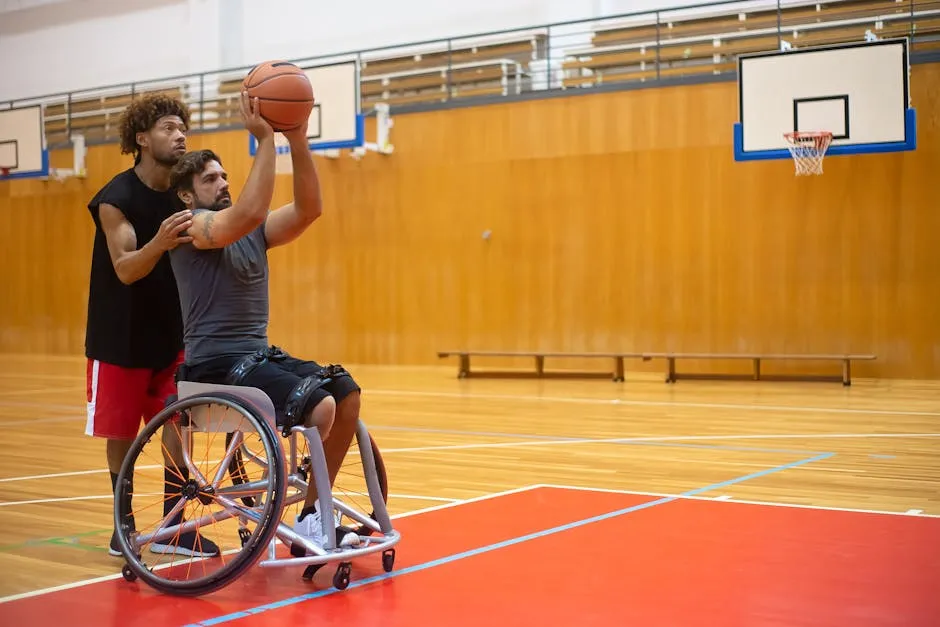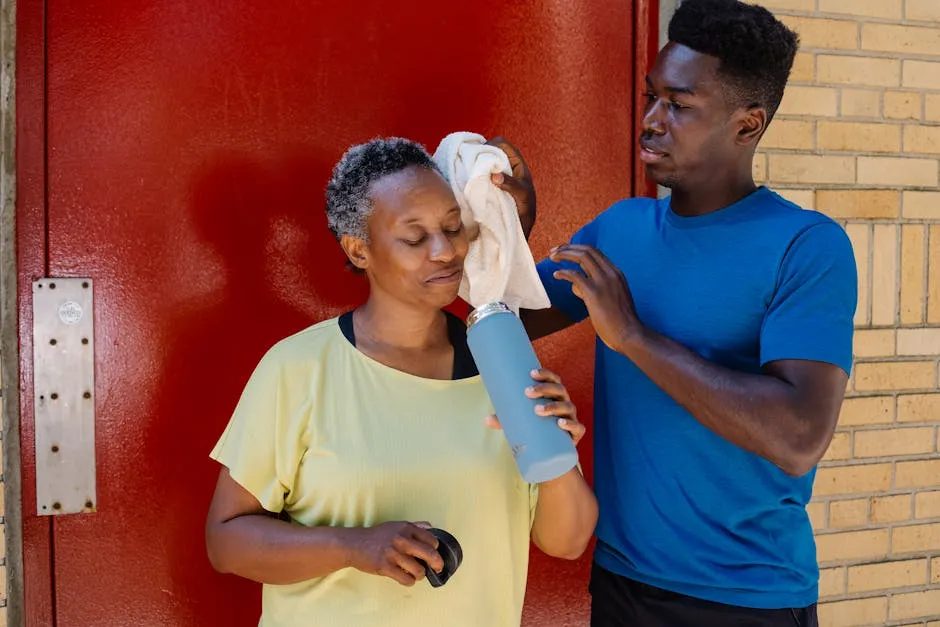Introduction
Georgetown University’s basketball program is a storied one. Established in 1907, the Hoyas have made a significant mark on college basketball. The team has a rich history, including one national championship in 1984 and numerous NCAA tournament appearances. From Patrick Ewing to Allen Iverson, Georgetown has produced some of the greatest talents in the game. As the 2023-2024 season unfolds, the Hoyas face new challenges. With a current record of 9 wins and 23 losses, they find themselves struggling, particularly in conference play, where they stand at 2-18. The Big East has proven to be a tough battleground this year, leaving the team in 10th place. Statistics play a crucial role in evaluating this season’s performance. They provide insights into how well the team is executing their game plan and highlight individual player contributions. Points per game, rebounds, and assists tell a story about the team’s strengths and weaknesses. As fans, analysts, and the coaching staff dissect these numbers, it’s clear that dissecting the statistics is essential for understanding the Hoyas’ position as they aim to improve and regain their place among the elite in college basketball. This analysis will dive into the key performance metrics for the team, while also highlighting the contributions of standout players so far this season.
Team Performance Overview
2023-2024 Season Summary
The Georgetown Hoyas have faced a challenging season. With a record of 9-23, their performance has been underwhelming. In the Big East Conference, they find themselves at the bottom, ranking 10th out of 11 teams. The season’s statistics reveal some of the struggles the Hoyas have encountered. The team averages 70.8 points per game, which places them in the middle of the pack. However, their defense has been a significant issue. They allow a staggering 77.9 points per game, one of the highest in the conference. This scoring margin of -7.0 highlights the struggles in both offensive execution and defensive consistency. Rebounding has also been a mixed bag for the Hoyas. They average 34.1 rebounds per game, which is comparable to their opponents, who average 34.0. This indicates that while they are competitive on the boards, they need to capitalize on more second-chance opportunities to improve their scoring. When looking at previous seasons, the Hoyas seem to be on a downward trend. In the 2022-2023 season, they finished with a record of 7-25 and an average of 69.5 points per game. The increase to 70.8 points per game this season is a small silver lining, but the overall performance leaves much to be desired. The ability to convert opportunities is crucial. The Hoyas have a field goal percentage of 41.5%, which is decent, but when compared to their opponents’ 48.9%, it shows a significant gap. Additionally, their three-point shooting percentage stands at 34.6%, slightly below the conference’s average. If you’re looking to support your basketball journey or just want to look good while doing it, check out this Georgetown Hoyas Basketball Jersey. It’s perfect for showing off your team spirit while you cheer from the sidelines! In summary, the 2023-2024 season has posed numerous challenges for the Georgetown Hoyas. By analyzing these statistics, we can gain valuable insights into the team’s performance, areas needing improvement, and the contributions of standout players as they strive for better results moving forward.
Comparative Analysis
Comparing Georgetown’s basketball statistics to conference averages reveals some eye-opening insights. The Hoyas average 70.8 points per game, which is only a smidge above the Big East’s average. However, they allow a whopping 77.9 points per game, placing them near the bottom of the conference in defensive performance. This -7.1 scoring margin highlights their struggle to keep opponents in check. When it comes to offensive and defensive rankings, Georgetown sits at 225th in offensive rating with 104.3 and a dismal 357th in defensive rating at 114.6. For perspective, the offensive rating measures how effectively a team scores points per 100 possessions, while the defensive rating does the same for points allowed. Georgetown’s inability to defend well has been a significant factor in their struggles this season. Their shooting percentages, at 41.5% from the field and 34.6% from three-point range, show they’re capable, yet they often fall short of capitalizing on scoring opportunities. In contrast, their Big East counterparts, particularly teams like UConn and Marquette, boast higher offensive efficiency and tighter defense. This stark contrast underscores the challenges Georgetown faces as they seek to improve their standing in the conference.For a deeper dive into Georgetown’s basketball statistics, check out the Georgetown basketball statistics.

Individual Player Statistics
Key Player Profiles
Jayden Epps has been the standout player for the Hoyas this season. Averaging 18.5 points per game, he’s not just scoring; he also dishes out 4.2 assists. His shooting percentages are impressive, sitting at 39.2% from the field and 30.5% from beyond the arc. Epps has an innate ability to create his own shot, leading the team in scoring. His contributions extend beyond just points; he also grabs 2.6 rebounds per game. Epps’ impact on the court is undeniable, as he often carries the team during crucial moments. Dontrez Styles is another key player, showcasing his versatility. Styles averages 12.8 points per game along with 5.8 rebounds, making him a vital component both offensively and defensively. His shooting percentage is a commendable 43.0%, and he also contributes with 0.7 blocks per game, showcasing his ability to protect the rim. Styles’ rebounding prowess allows Georgetown to stay competitive on the boards, a crucial factor in their overall performance. Supreme Cook rounds out the trio of key players. He averages 10.5 points and leads the team with 8.0 rebounds per game. Cook’s efficiency is notable, boasting a field goal percentage of 57.5%. This kind of scoring ability, paired with his rebounding skills, makes him a pivotal player in the paint. His ability to finish around the rim adds another layer to Georgetown’s offensive strategy. Together, these players illustrate the potential of the Hoyas. They each bring unique skills to the table, but for Georgetown to elevate its game, these individual contributions need to coalesce into a cohesive team effort. The Hoyas must work on their defensive strategies and overall execution to transform their individual strengths into collective success.
Supporting Cast
The Georgetown Hoyas have seen various players step up this season. While Jayden Epps has been a scoring machine, others have made significant contributions. Rowan Brumbaugh, a freshman, has been a welcome addition. He averages 8.3 points and 2.2 rebounds per game. His shooting percentage is an impressive 40.7% from the field and 37.0% beyond the arc. He can light up the scoreboard when needed. Jay Heath, a senior, has also played a crucial role. He contributes 8.2 points and 2.8 rebounds per game. Heath’s experience shows, especially during tight games. He’s often the calm in the storm, providing much-needed poise alongside Epps. Ismael Massoud adds depth to the team. He averages 5.6 points and 3.0 rebounds per game. While he may not always grab headlines, his contributions are vital. Massoud’s ability to stretch the floor as a versatile forward keeps defenses guessing. Standout performances have been a highlight this season. Jayden Epps scored a season-high of 34 points against Jackson State. He not only showcased his scoring ability but also added 4 rebounds and 4 assists. Supreme Cook, the team’s leading rebounder, grabbed a staggering 14 boards in a game against Xavier. His presence in the paint is crucial for Georgetown’s success. If you’re serious about improving your basketball skills, consider using a Basketball Shooting Training Aid. It can help you perfect your shooting form and become a scoring machine just like Epps!
Game-by-Game Breakdown
The 2023-2024 season has been a rollercoaster for the Hoyas. Here’s a closer look at the game-by-game performance that shaped the season: In their opener against Le Moyne, Georgetown soared to a 94-57 victory, showcasing their offensive firepower. Epps led with 22 points and 7 assists. This game set the tone for the season, illustrating their potential. However, the momentum quickly shifted. A heartbreaking loss followed against Holy Cross, where Georgetown fell 67-68. The team struggled, shooting just 36.1% from the field. This inconsistency would haunt them throughout the season. The Hoyas bounced back with a win over Mount St. Mary’s. They triumphed 83-72, with Epps scoring 20 points. This game highlighted their ability to recover from setbacks. Georgetown faced tough competition against ranked opponents, leading to a string of losses. Against UConn, they lost 67-80, despite Epps scoring 25 points. The defense struggled, allowing 48.9% shooting. The team had close matches, including a 91-92 loss to Xavier, where Epps again shined with 30 points. It was a thrilling game that showcased their resilience, even in defeat. As the season progressed, the Hoyas fought hard but faced challenges against top-tier teams. They lost to Marquette, 57-91, and struggled in defensive matchups. However, moments of brilliance from Epps and Cook provided flashes of hope. In the final stretch, the team managed to secure a narrow victory against DePaul, winning 77-76. This game was pivotal, showcasing the potential for success moving forward. Overall, the game-by-game breakdown reveals a season of ups and downs. The Hoyas will need to build on their strengths and address weaknesses as they look ahead to future seasons.
Advanced Statistics and Metrics
Efficiency Ratings
Advanced statistics in basketball offer a fresh lens through which to evaluate player performance. Among these, the Player Efficiency Rating (PER), True Shooting Percentage (TS%), and Effective Field Goal Percentage (eFG%) stand out. Each metric provides unique insights that go beyond traditional stats. Player Efficiency Rating (PER) quantifies a player’s overall contributions on the court. It considers positive outcomes like points, assists, and rebounds while penalizing negative actions like missed shots and turnovers. A high PER indicates a player is significantly impacting the game, making it an essential metric for assessing talent. Next up is True Shooting Percentage (TS%). This statistic helps evaluate a player’s scoring efficiency by incorporating field goals, three-pointers, and free throws. Unlike standard shooting percentages, TS% gives a more comprehensive view of a player’s scoring ability. For example, while a player might shoot 40% from the field, their TS% may reveal they are more efficient when factoring in free throws and three-point shots. Effective Field Goal Percentage (eFG%) takes shooting efficiency a step further by adjusting for the added value of three-point shots. Since a three-pointer counts as one and a half field goals, eFG% provides a more accurate representation of a player’s shooting effectiveness. This metric is especially crucial for players who rely on long-range shots to bolster their scoring. These advanced metrics not only enrich our understanding of individual player contributions but also highlight areas for improvement. For instance, Georgetown’s Jayden Epps averages 18.5 points per game, but his TS% of 510 indicates he could enhance his scoring efficiency. Contrastingly, Supreme Cook boasts an impressive eFG% of 575, showcasing his knack for high-value shots. Understanding these metrics helps coaches and fans alike gauge performance beyond mere points scored. In a season where Georgetown’s overall shooting percentages have struggled, such insights become vital for player development and team strategy. By focusing on efficiency ratings, the Hoyas can identify their strengths and weaknesses, setting the stage for future success.
Team Efficiency
Georgetown basketball’s efficiency metrics reveal both strengths and weaknesses. The team’s offensive rating stands at 104.3, placing them 225th nationally. This indicates they score 104.3 points per 100 possessions, which is decent but not stellar in the competitive Big East. However, their defensive rating is a troubling 114.6, ranking them 357th. This means they allow 114.6 points per 100 possessions, a figure that raises eyebrows and concerns. The Hoyas average 70.8 points per game. While that number seems respectable, it masks a deeper issue. They allow 77.9 points per game, resulting in a scoring margin of -7.1. This margin is indicative of their struggles, particularly on the defensive end. It’s like inviting a friend over for dinner but serving them nothing but burnt toast—no one’s leaving that table satisfied. Turning to rebounds, Georgetown averages 34.1 per game, which mirrors their opponents’ average of 34.0. This parity suggests they compete well on the boards but often fail to convert those opportunities into points. The team’s field goal percentage of 41.5% is also a concern, particularly when compared to their opponents’ 48.9%. To elevate their game, the Hoyas must focus on improving their defensive strategies and enhancing their shooting efficiency. With a bit of adjustment, they can transform these numbers from mere statistics into a pathway to victory.
Historical Context
Georgetown’s Legacy
Georgetown basketball has a rich history that’s hard to overlook. Founded in 1907, the Hoyas have claimed one NCAA Championship title in 1984 and made 31 NCAA Tournament appearances. They have also reached five Final Fours, a testament to their prowess on the hardwood. In recent years, however, the Hoyas have faced significant challenges, notably the 2023-2024 season, where they’ve struggled with a record of 9-23. Historically, the Hoyas have maintained a competitive edge, but the current statistics paint a different picture. For instance, their average points per game this season is 70.8, a stark contrast to their historic averages. In the 2022-2023 season, they averaged 69.5 points, which isn’t a dramatic difference but reflects a downward trend in performance. If you’re a die-hard fan, you might want to add some flair to your collection with a Georgetown Hoyas Cap. It’s a great way to show off your team spirit while keeping the sun out of your eyes!
Evolution of the Program
The evolution of Georgetown’s basketball program has been shaped by changes in coaching staff. Legendary coach John Thompson set a high standard in the 1980s, which was followed by Patrick Ewing. Both left indelible marks on the program. However, since the transition to Ed Cooley, the Hoyas have faced a steep learning curve. Recruitment strategies have also shifted. The Hoyas, once able to draw top-tier talent, now compete with other programs for recruits. The emphasis has shifted towards player development, which is crucial for regaining a competitive edge. This evolution highlights the need for adaptability in the ever-changing landscape of college basketball.
Conclusion
In summary, the statistical analysis reveals the challenges facing the Georgetown Hoyas this season. Their offensive struggles, reflected in their shooting percentages and points allowed, underscore the need for improvement. As the 2023-2024 season progresses, fans are left pondering the team’s potential. Support for the Hoyas remains vital as they navigate these challenges. The journey ahead may be tough, but with a dedicated fan base, the Hoyas can work toward reclaiming their historic position in college basketball. As the season unfolds, staying engaged with the team and cheering them on will play a crucial role in their development and future successes. For those who want to stay hydrated while cheering, consider a Sports Water Bottle with Time Marker. It’s a fun way to keep track of your hydration while you root for your team!
FAQs
What is Georgetown’s historical performance in NCAA tournaments?
Georgetown has made 31 NCAA Tournament appearances and won the championship in 1984.
Who are the all-time leading scorers in Georgetown basketball history?
The top scorers include Patrick Ewing and Allen Iverson, both of whom are legends in the program.
How does Georgetown’s current season compare to previous seasons?
This season’s record stands at 9-23, contrasting with stronger performances in past years.
What are the key statistics to watch for in upcoming games?
Key stats include points per game, field goal percentage, and rebounds, all critical for assessing performance.
Please let us know what you think about our content by leaving a comment down below!
Thank you for reading till here 🙂
If you’re interested in learning more about basketball tactics, don’t miss out on the Basketball Tactics and Strategies Book. It’s a great resource for coaches and players looking to elevate their game!
And if you’re looking to take your fitness routine to the next level, consider Resistance Bands for Strength Training. They can help you build muscle and improve your overall athletic performance!
All images from Pexels




